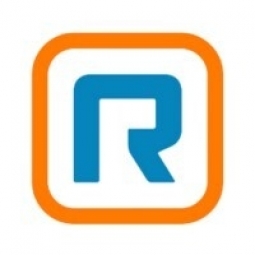Technology Category
- Networks & Connectivity - 5G
- Sensors - Acoustic Sensors
Applicable Industries
- Buildings
- Telecommunications
Applicable Functions
- Sales & Marketing
Use Cases
- Personnel Tracking & Monitoring
Services
- Training
About The Customer
The PGA of America is the world's largest working sports organization, with over 28,000 dedicated men and women promoting the game of golf to everyone, everywhere. The organization conducts more than 30 tournaments each year and operates a headquarters, 41 section offices across the U.S., an educational center, a golf learning center for the public, a golf museum, a philanthropic arm (PGA Foundation), and four of its own golf courses. The PGA is headquartered in Palm Beach Gardens, FL, and was founded in 1916.
The Challenge
The PGA of America, the world's largest working sports organization, was facing a significant challenge with its communication infrastructure. The organization, which promotes the game of golf across the U.S., was relying on an aging, on-premises PBX system for phone services at its headquarters and educational center. Smaller facilities and temporary events, such as tournaments, had to acquire their own phone services from local providers. This fragmented approach was not only inefficient but also lacked redundancy. In the event of a power outage due to a windstorm, the organization would virtually disappear, with callers hearing nothing but dead air. Furthermore, the PGA wanted to bring newer communication functionalities such as video and audio conferencing to more people within the organization. The existing audio conferencing service was too expensive, and there was a need for better communication tools for employees who traveled extensively, which made up approximately 60% of the staff.
The Solution
In 2014, Laurie French, PGA’s director of technology operations, decided to upgrade and consolidate phone service across the organization. After evaluating and testing four unified communications as a service (UCaaS) solutions for about a year, PGA chose RingCentral. RingCentral met all the requirements of the PGA, worked better in their environment, and was priced right. The organization was able to reduce its communication costs by 25% after deploying RingCentral. Immediate savings came from eliminating the headquarters’ 25 fax machines and dedicated communication lines, replacing the expensive audio conferencing service with RingCentral Meetings, and retiring the two PBXs. Further savings were anticipated as French planned to convert more of the section offices, golf courses, and temporary sites over to RingCentral. RingCentral also allowed French to deliver more communication functionality to the PGA staff, improving their ability to stay connected and on top of what’s happening in the office.
Operational Impact
Quantitative Benefit

Case Study missing?
Start adding your own!
Register with your work email and create a new case study profile for your business.
Related Case Studies.

Case Study
Energy Saving & Power Monitoring System
Recently a university in Taiwan was experiencing dramatic power usage increases due to its growing number of campus buildings and students. Aiming to analyze their power consumption and increase their power efficiency across 52 buildings, the university wanted to build a power management system utilizing web-based hardware and software. With these goals in mind, they contacted Advantech to help them develop their system and provide them with the means to save energy in the years to come.

Case Study
Intelligent Building Automation System and Energy Saving Solution
One of the most difficult problems facing the world is conserving energy in buildings. However, it is not easy to have a cost-effective solution to reduce energy usage in a building. One solution for saving energy is to implement an intelligent building automation system (BAS) which can be controlled according to its schedule. In Indonesia a large university with a five floor building and 22 classrooms wanted to save the amount of energy being used.

Case Study
Powering Smart Home Automation solutions with IoT for Energy conservation
Many industry leaders that offer Smart Energy Management products & solutions face challenges including:How to build a scalable platform that can automatically scale-up to on-board ‘n’ number of Smart home devicesData security, solution availability, and reliability are the other critical factors to deal withHow to create a robust common IoT platform that handles any kind of smart devicesHow to enable data management capabilities that would help in intelligent decision-making

Case Study
Protecting a Stadium from Hazardous Materials Using IoT2cell's Mobility Platform
There was a need for higher security at the AT&T Stadium during the NFL draft. There was a need to ensure that nuclear radiation material was not smuggled inside the stadium. Hazmat materials could often be missed in a standard checkpoint when gaining entry into a stadium.









